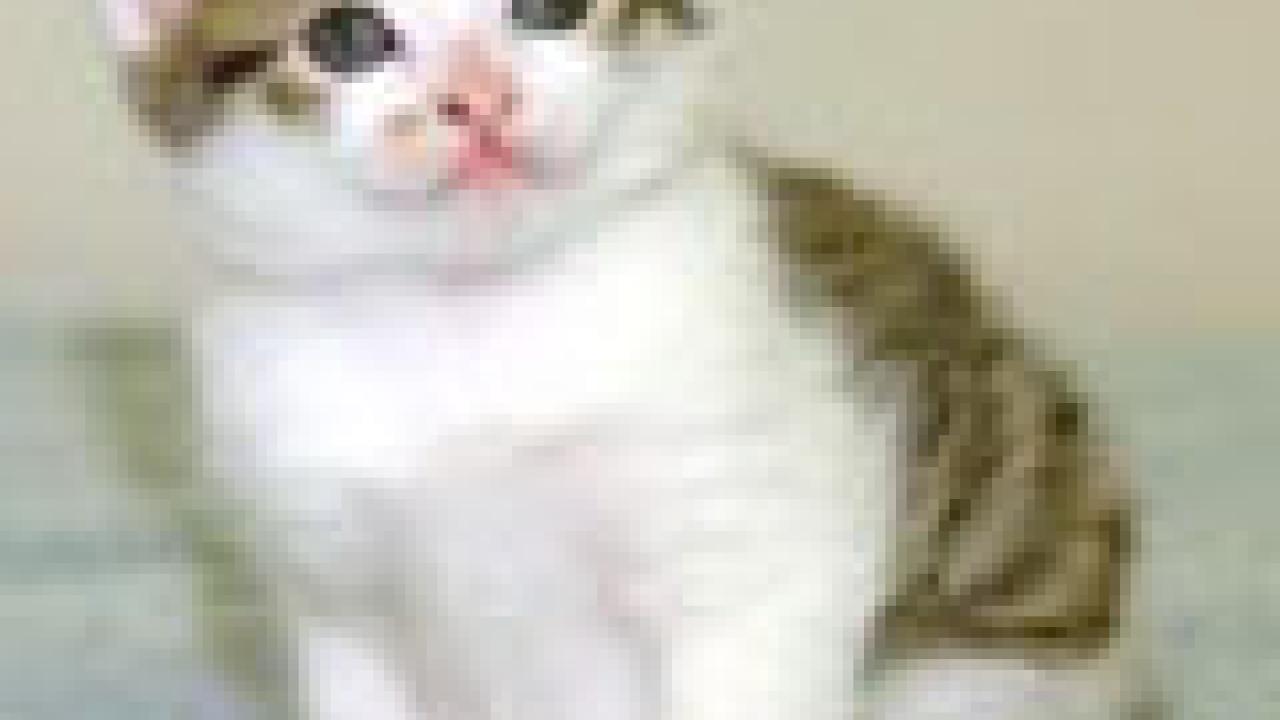UC Davis feline genetics specialists today confirmed that a cat born at Texas A&M University is indeed a clone, making it the first reported cloned cat and first cloned companion animal.
Sheep, mice, cattle, goats and pigs are the other animal species that have been cloned. Texas A&M is responsible for the cloning of several of these species.
The cloning accomplishment is "a huge leap forward" for human-health and feline-health research, said School of Veterinary Medicine assistant professor Leslie Lyons, who did not help produce the cloned cat but did analyze its DNA. "Cats are very good physiological models for human diseases. This brings us much closer to finding ways to prevent or treat disorders that are common to both cats and humans." There is currently no way to prove that the cat is a clone, so the feline genetics expertise in the Lyons laboratory was crucial to the project.
The cloned cat was born about two months ago at Texas A&M. Lyons is a co-author of a brief scientific report that will appear in the Feb. 21 print issue of the journal Nature and was published online today at .
Lyons' lab in the UC Davis School of Veterinary Medicine is currently looking for the genes that cause three inherited diseases that afflict both cats and humans: progressive retinal atrophy, an eye disease that causes blindness, and two potentially fatal disorders, polycystic kidney disease and lymphosarcoma, a form of cancer.
The achievement could also improve the chances that pet cats could be cloned, Lyons said. But, she added, "People have to realize this is a means of reproduction, not resurrection," because cats are products not only of their genes but also of their environments.
The kitten, a female called "Cc:" and almost two months old, appears healthy and energetic, said Texas A&M associate professor of veterinary medicine Mark Westhusin. She was created when Westhusin and Texas A&M colleagues transplanted DNA from a female calico cat into an egg cell whose nucleus had been removed and then implanted that embryo into a surrogate mother.
Lyons' analysis confirms that Cc: is a genetic match to the donor cat. Cc: is not, however, identical in appearance, because the pattern on cats' coats is only partly determined by genes. Other factors during development also influence coat pattern.
Out of 87 cloned cat embryos that the Texas A&M team implanted, Cc: was the only one to survive. The researchers said that is comparable to the success rate for implanted clones of sheep, mice, cows, goats and pigs.
Texas A&M asked UC Davis to test the kitten's DNA because the UC Davis School of Veterinary Medicine has an extensive library of "random-bred," or mixed-breed, cat DNA.
"We have the necessary genetic database on mixed-breed cats to measure the match probability," Lyons said. "We have determined that there is only one chance in 9,000,000,000,000,000 that this cat is not a clone of the donor cat."
A broad range of research efforts at the School of Veterinary Medicine and throughout the UC Davis campus are directed at finding genetic bases for disease in animals and humans and developing new treatments and preventive strategies, such as selective breeding or gene therapy.
The Lyons lab home page is online at http://faculty.vetmed.ucdavis.edu/faculty/lalyons/Sites/LyonsDenHomepage.htm.
Texas A&M University's news release and photographs are online at http://www.tamu.edu/aggiedaily/press/index.html.
The journal Nature's news release and photographs are online at http://www.nature.com/nsu/020211/020211-13.html.
